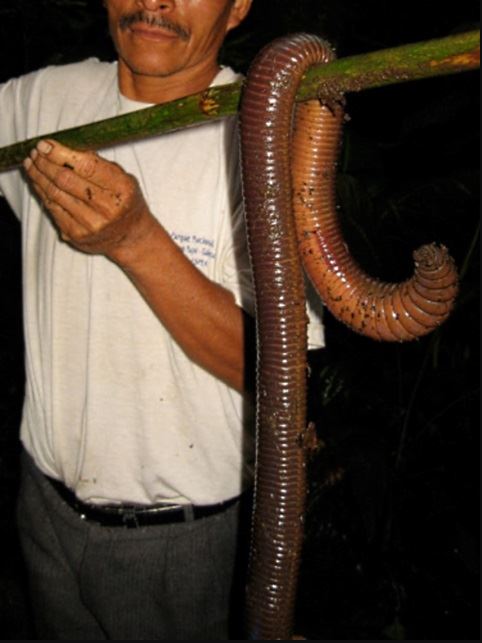 he discovery of a worm the size of a snake in the foothills of the Sumaco Volcano in Ecuador in 2009 was a remarkable find. The worm, which measured about five feet in length, was an extraordinary discovery for the scientific community. The finding was of great interest to biologists, who were eager to study the creature and understand its behavior, habitat, and possible role in the ecosystem.
he discovery of a worm the size of a snake in the foothills of the Sumaco Volcano in Ecuador in 2009 was a remarkable find. The worm, which measured about five feet in length, was an extraordinary discovery for the scientific community. The finding was of great interest to biologists, who were eager to study the creature and understand its behavior, habitat, and possible role in the ecosystem.
The discovery of the worm, which was dubbed as the “giant worm,” was made by a team of researchers from the University of Quito in Ecuador. The team was conducting a biodiversity survey in the area when they stumbled upon the creature. The team was surprised to find the worm as it was not previously known to science.
The worm’s discovery was a significant scientific breakthrough, and it has since sparked much interest and discussion in the scientific community. Researchers have been studying the worm ever since, trying to understand its physiology, ecology, and behavior.
Physical Characteristics of the Giant Worm

The giant worm found in the foothills of the Sumaco Volcano in Ecuador is a remarkable creature with several unique physical characteristics. The worm is about five feet in length, making it one of the longest worms ever recorded. Its body is long and slender, and it has a distinct brown color.
The worm’s body is made up of numerous segments, each of which is covered with small, bristly hairs. These hairs are thought to be used for gripping surfaces, allowing the worm to move through the soil and vegetation with ease.
The worm’s head is also unique, with two pairs of antennae and a small mouth located at the front of the body. The worm’s mouth is surrounded by a ring of sharp teeth, which it uses to catch and eat small insects and other invertebrates.
The giant worm found in the foothills of the Sumaco Volcano in Ecuador is believed to live underground, where it burrows through the soil and feeds on small insects and other invertebrates. The worm is most active at night when it emerges from its burrow to feed.
The worm’s burrow is thought to be deep and complex, with multiple tunnels and chambers. The worm is known to be a solitary creature, and it is not known to live in colonies or groups.
The worm’s habitat is also unique. It is found in the foothills of the Sumaco Volcano in Ecuador, where the soil is rich in nutrients and the vegetation is dense. The worm’s habitat is thought to be a critical part of the ecosystem, as it helps to aerate the soil and break down organic matter.
Impact on Ecosystem
The discovery of the giant worm in the foothills of the Sumaco Volcano in Ecuador has raised questions about its possible impact on the ecosystem. Researchers are currently studying the worm’s role in the ecosystem and how it interacts with other species.
One possible impact of the giant worm on the ecosystem is its ability to aerate the soil. The worm’s burrowing activities are thought to help improve soil structure and promote the growth of vegetation in the area.
The giant worm’s role in breaking down organic matter is also significant. The worm’s feeding activities help to break down dead plant material, releasing nutrients back into the soil and promoting the growth of new vegetation.
The discovery of the giant worm in the foothills of the Sumaco Volcano in Ecuador in 2009 was a significant scientific breakthrough. The worm’s unique physical characteristics, behavior, and habitat have sparked much interest and discussion in the scientific community.
Researchers are currently studying the giant worm’s physiology, ecology, and behavior to better understand its role in the ecosystem. The worm’s ability to aerate the soil and break down
Avid Writer with invaluable knowledge of Humanity!
Upcoming historian with over 30 million views online.
“You make your own life.”





